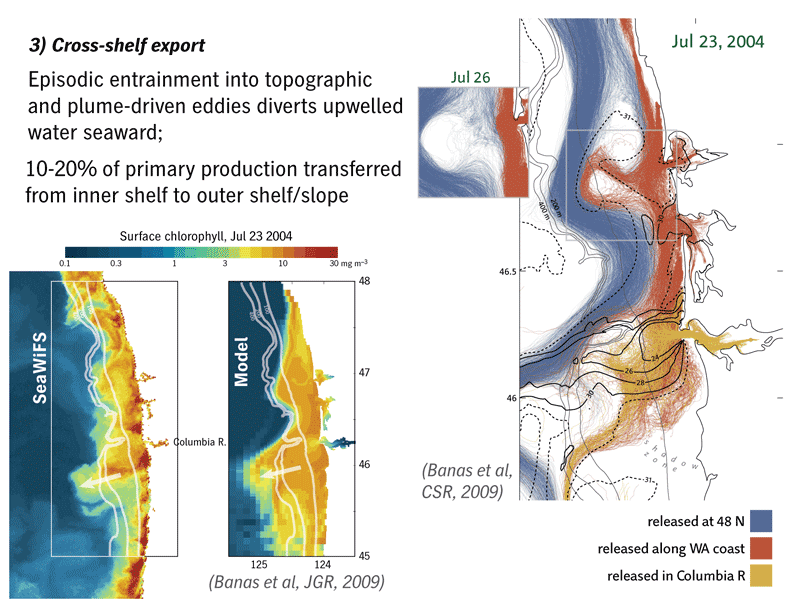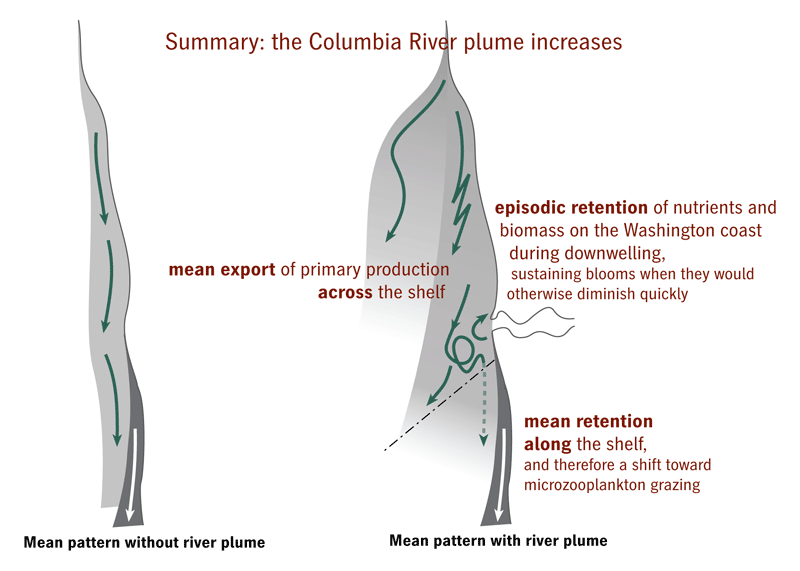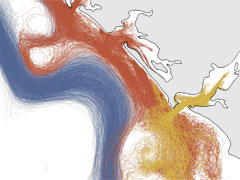The model
As part of the NSF RISE (River Influences on Shelf Ecosystems) program, my collaborators and I coupled a four-box ecosystem model to a high-resolution hindcast of the Washington-Oregon coast, to examine Columbia River plume effects on coastal biological production.
For more information, see
Banas NS, Lessard E, Kudela R, MacCready P, Peterson T, Hickey BM, Frame E (2009) Planktonic growth and grazing in the Columbia River plume region: A biophysical model study. J. Geophys. Res., 114, C00B06, doi:10.1029/2008JC004993. (download pdf)
Banas NS, MacCready P, Hickey BM (2009) The Columbia River plume as cross-shelf exporter and along-shelf barrier. Cont. Shelf Res., 29:292-301. (download pdf)
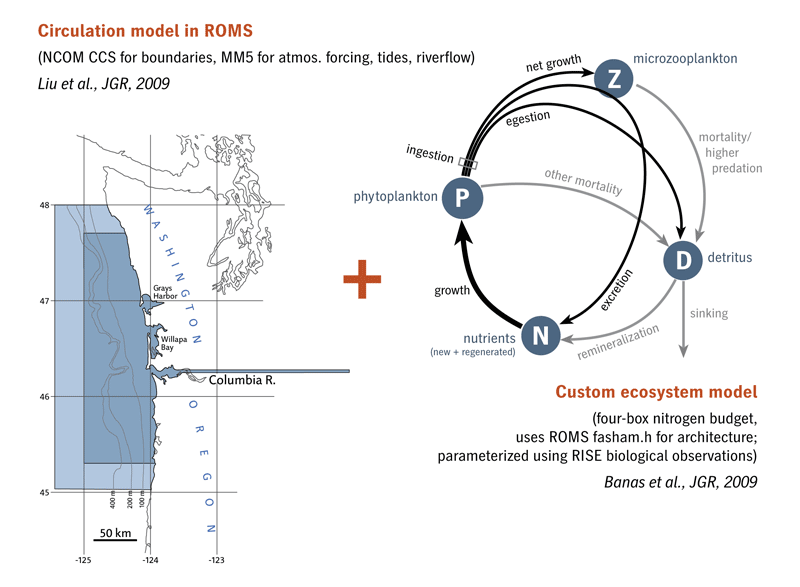
The data
RISE cruises provided a rich biological dataset for parameterizing and validating the ecosystem model. Microzooplankton dilution experiments (Lessard group, UW) were particularly important for diagnosing key rate parameters. Here we show phytoplankton community growth and microzooplankton community grazing rates from these experiments and the model. In both, in newly upwelled water (high nitrate), growth exceeds grazing, but as nitrate is exhausted, the community settles into a growth-grazing equilibrium.

Model results
…show three main effects of the Columbia River plume on coastal productivity.
First, retention of nutrients and biomass by the plume acts as a buffer during downwelling events, sustaining coastal production through time periods in which production would otherwise fall rapidly.
The comparison of two model cases below, one with the Columbia included and the other with the Columbia turned off, illustrates one such event.
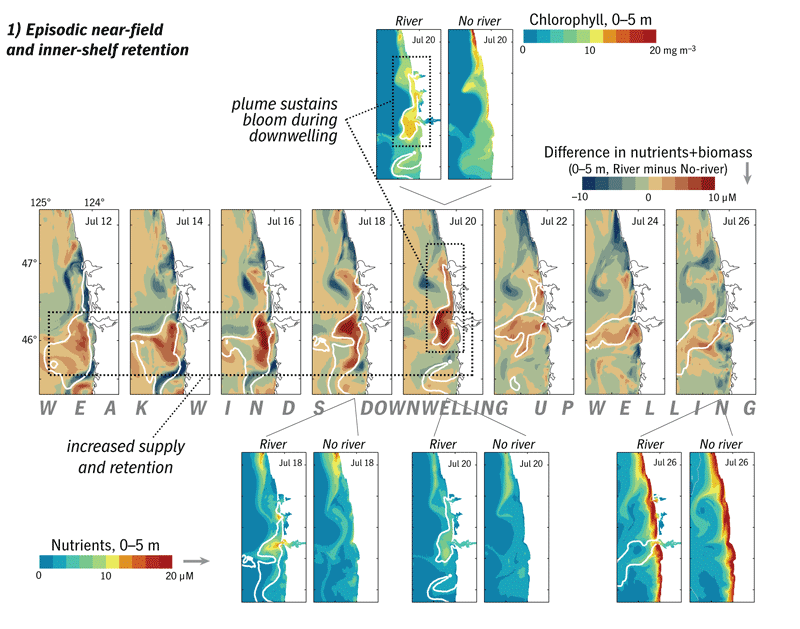
In the summertime mean as well, the Columbia plume increases retention in the along-coast direction: model particles released along the Washington coast disperse more than they do in the absence of the plume, but the net effect is less equatorward transport.
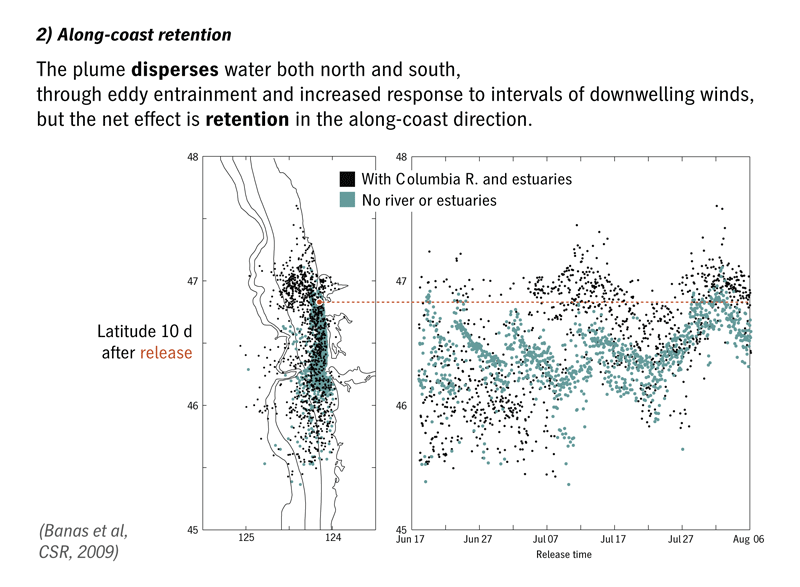
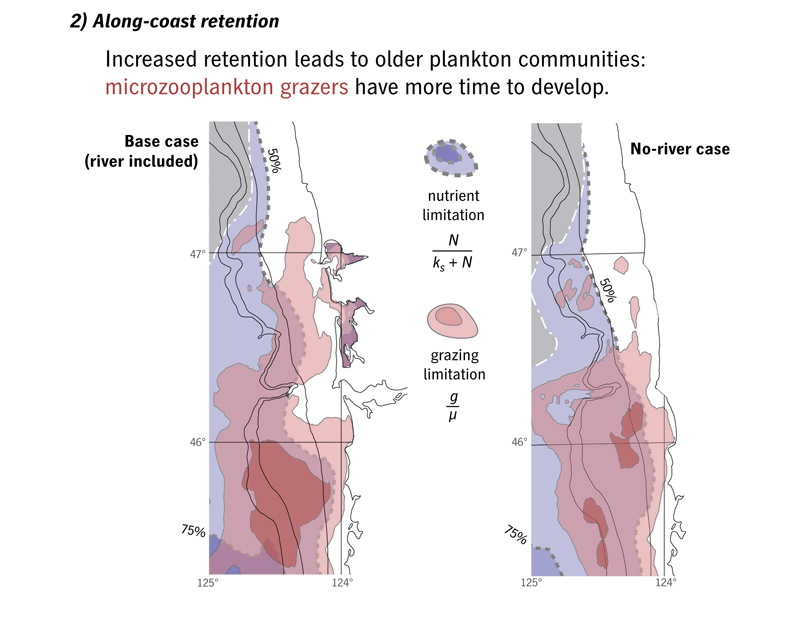
The same circulation changes that cause increased retention in the presence of the plume in the along-shelf direction cause increased export in the cross-shelf direction. Biomass and primary productivity on the inner shelf are reduced, biomass and productivity beyond the 100 m isobath are increased. 